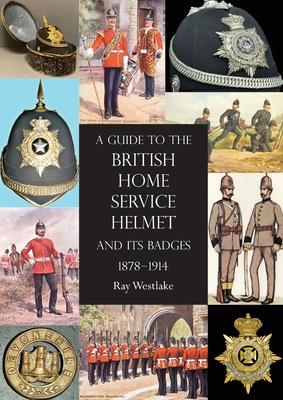The British Army's Home Service Helmet was introduced in 1878. It was of a German influence and would replace a long line of shakos going back to the days of the Peninsular War and Waterloo. With the new headdress came the helmet plate, those highly desirable items of militaria much sought after today by collectors. Concentrating mainly on the Regular Army, this 'Guide' will describe and illustrate many of those plates. It will, by using contemporary photographs and artwork by leading military artists, also show them being worn. Besides the Regulars, the many hundreds of Victorian and Edwardian Militia, Volunteer and later Territorial Force regiments, would also take into use the home service helmet. But here, as ever, we now tread on a vast and, in most cases, un-charted area of militaria collecting. By including this important aspect of British military history in this book, I will certainly not be in any position to claim completeness. But include it I must, albeit that just the tip of the proverbial iceberg will most likely be reached. Fortunately, and returning to the subject of the Regular Army now, details of the helmet plates worn by officers appear in the several editions of 'Dress Regulations'. I have consulted those for 1883, 1891, 1894, 1900, 1904 and 1911 and from these essential reference works have quoted verbatim. For the helmet plates worn by other ranks, I have turned to old friends, Arthur L Kipling and Hugh King and Volume One of their comprehensive reference work, Head-dress Badges of the British Army, referred to in the 'Guide' as 'Kipling and King'.

A Guide to the British Home Service Helmet and Its Badges 1878 - 1914
The British Army's Home Service Helmet was introduced in 1878. It was of a German influence and would replace a long line of shakos going back to the days of the Peninsular War and Waterloo. With the new headdress came the helmet plate, those highly desirable items of militaria much sought after today by collectors. Concentrating mainly on the Regular Army, this 'Guide' will describe and illustrate many of those plates. It will, by using contemporary photographs and artwork by leading military artists, also show them being worn. Besides the Regulars, the many hundreds of Victorian and Edwardian Militia, Volunteer and later Territorial Force regiments, would also take into use the home service helmet. But here, as ever, we now tread on a vast and, in most cases, un-charted area of militaria collecting. By including this important aspect of British military history in this book, I will certainly not be in any position to claim completeness. But include it I must, albeit that just the tip of the proverbial iceberg will most likely be reached. Fortunately, and returning to the subject of the Regular Army now, details of the helmet plates worn by officers appear in the several editions of 'Dress Regulations'. I have consulted those for 1883, 1891, 1894, 1900, 1904 and 1911 and from these essential reference works have quoted verbatim. For the helmet plates worn by other ranks, I have turned to old friends, Arthur L Kipling and Hugh King and Volume One of their comprehensive reference work, Head-dress Badges of the British Army, referred to in the 'Guide' as 'Kipling and King'.